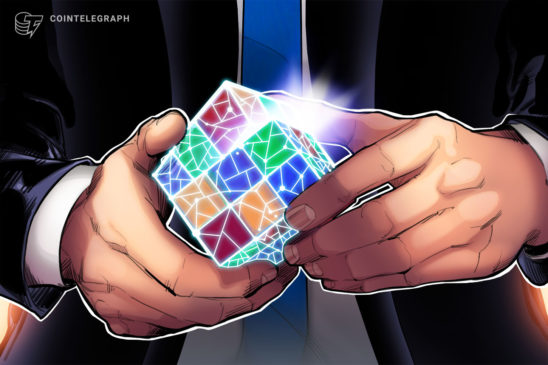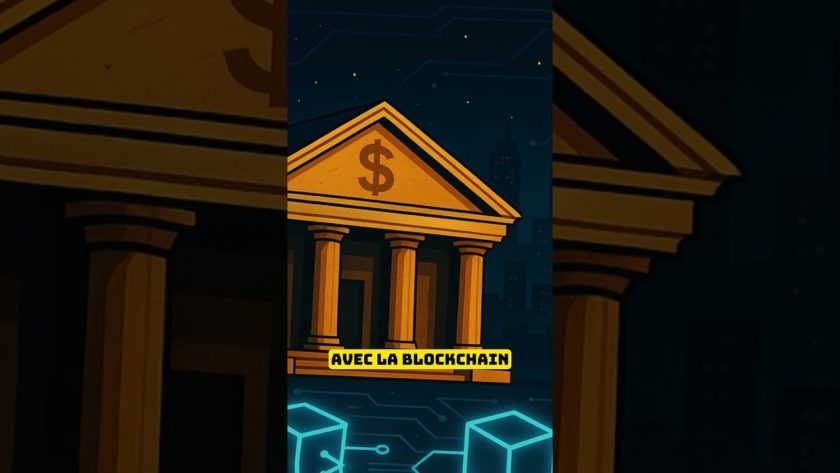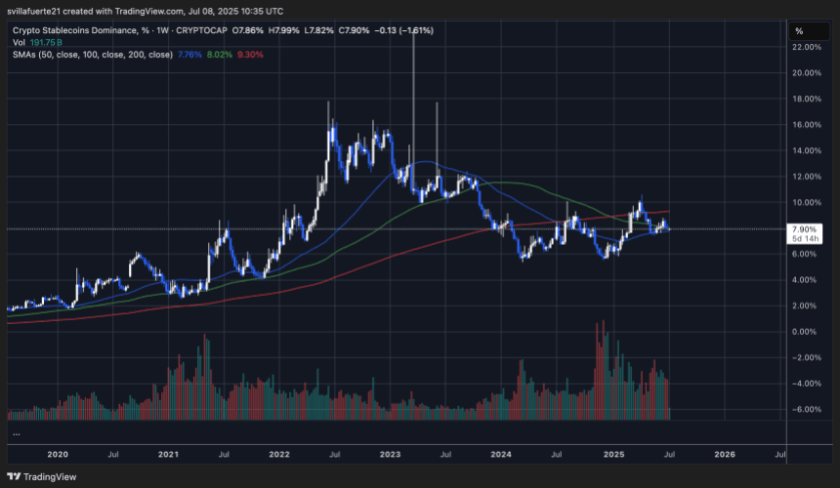Online events are becoming more common as coronavirus cases continue to surge. So it shouldn’t come as a surprise that the blockchain community has seen an uptake in virtual hackathons this year, a concept which is actually proving to be beneficial.
For example, hackathon management platform TAIKAI works with organizations to facilitate a virtual open network for innovators looking to solve different challenges. TAIKAI CEO, Mário Ribeiro Alves, told Cointelegraph that lately the platform has been drawing attention from blockchain companies interested in launching virtual hackathons. According to Alves, virtual hackathons will play an important role in developing the blockchain ecosystem, since they can be highly effective for building out useful technologies over time:
“From the participant perspective, it is a lot less stressful and leads to better focus on developing quality solutions, in the comfort of their own home. However, it loses some of its interactions and networking moments compared to in-person hackathons, which is also valuable for both participants and some organizations.”
Although virtual events may pose limitations when it comes to networking, the blockchain community in particular has a unique opportunity to solve the challenges that come along with emerging technologies.
Custom blockchains for interoperability
For instance, a seven-week long hackathon dedicated to building out custom blockchain networks designed to interoperate with the Polkadot and Kusama ecosystem was recently launched on June 29.
Known as Hackusama, this is the first-ever hackathon that allows developers to build custom blockchains using Substrate, the framework Kusama is built upon, which is also nearly the exact same codebase as Polkadot. Kusama is the network that was launched in 2019 by Gavin Wood, Polkadot’s founder and the chief technical officer of Ethereum.
Web3 Foundation, the initiative behind the Polkadot network, is helping organize Hackusama. Web3 Foundation’s community and growth manager, Dan Reecer, told Cointelegraph that it’s important for an event such as this to be virtual since building a blockchain can take several weeks.
Reecer noted that Hackusama was planned in September 2019, before the rise of COVID-19, and was always meant to be virtual, as the team recognized that long-term events are better for achieving technical outcomes:
“Virtual hackathons, in my opinion, are the only way to go if you want to end the hackathon with valuable technology. In-person, weekend hackathons to me are purely a branding, recruiting, and relationship-building exercise. They are valuable and still have their place, but in blockchain or any new technologies, the builders need more time.”
Reecer explained that a main goal of Hackusama is to provide prizes for teams that want to build working blockchains, which can eventually become a parachain on Kusama or Polkadot. “The goal is to have different blockchains plugging into a central network that unites all chains together. At the moment, that tech hasn’t been released yet,” said Reecer.
While this highlights how easy the Substrate framework makes it for developers to build their own application-specific chain, it also helps create interoperability between chains across the Polkadot and Kusama ecosystem. Reecer explained that this can be used in “gaming and eSports, messaging, decentralized autonomous organizations, marketplaces, oracles, music, and social networking use cases, all of which we hope to see moving forward.”
DApps aim to solve new challenges
The enterprise-grade distributed ledger platform, Hedera Hashgraph, also recently concluded their six-week long “Hedera20” virtual hackathon. As Hedera’s senior manager of events and community, Lina Tran, told Cointelegraph, the company hosted their very first hackathon in the fall of 2018, which was a three-day event distributed across eight cities around the world, with some of the creations becoming the “very first running on the Hedera mainnet today,” Tran said.
The Hedera mainnet is currently live and has processed over 100 million transactions to date, according to Tran. Based on what Hedera’s mainnet has achieved — which was exemplified by the company’s first hackathon — Hedera’s virtual hackathon was meant to encourage developers to use the Hedera Consensus Service. Launched on Feb. 13, the Hedera Consensus Service allows developers to build their own application networks on Hedera’s public ledger.
Tran pointed out that Hedera20 was always meant to be a virtual event, regardless of COVID19. She noted that the hackathon attracted over 800 developers who built new decentralized applications or DApps on the Hedera network: “Having launched in developer preview in February, we’re in the early days of developers and entrepreneurs exploring the possibilities of this exciting new technology.”
Tran noted that the first-place winner of the Hedera20 hackathon was a company called OXILES. The group developed an event listener DApp that brings together distributed ledger events with backend microservices.
In addition, South-Korea’s largest public blockchain, ICON (ICX), is currently hosting a two-month long virtual hackathon called “ICON Hyperhack,” intended to encourage developers to build DApps on the ICON protocol. ICON released its Blockchain Transmission Protocol on May 28, enabling interoperability between individual blockchains. This will allow for value transfer, service innovation and the exchange of information between different blockchains on ICON.
Marcus Jun — founder and CEO of ICON’s accelerator partner and Seoul launchpad, Hyperconnector — told Cointelegraph that this is not ICON’s first hackathon, as it has hosted a DApp challenge before. However, ICON Hyperhack was planned to be virtual, as the company’s goal is to target developers at scale to leverage and build products for use in decentralized finance, utility, non-fungible tokens and gaming based on the ICON protocol: “Since our hackathon will last for two months from June 19th to August 14th, we’re asking developers to build out full solutions, meaning front end and back end.”
Blockchain solutions to tackle COVID-19 challenges
Unsurprisingly, virtual hackathons organized by blockchain companies also focus on building out solutions to combat COVID-19-related challenges. Blockchain software publisher Block.one recently concluded its one-month-long EOSIO “Coding for Change” virtual hackathon. Block.one’s director of developer relations, Serg Metelin, told Cointelegraph that as COVID-19 continues to change the world, blockchain can create new economic opportunities to combat rising challenges:
“The goal of Coding for Change was to showcase how blockchain can have a positive impact on the world and how the technology can be applied to rebuild after COVID19. The hackathon attracted more then 900 participants from over 92 countries.”
On June 12, Block.one announced EOS Costa Rica as the hackathon winner for building a blockchain-based healthcare solution called Lifebank. Built on the EOS.IO blockchain, Lifebank is a project that solves blood donation shortages that occur due to large-scale disruptions like the one currently outlined by The Pan American Health Organization, which issued a warning regarding shortages for blood transfusions following COVID-19.
Co-founder of EOS Costa Rica, Edgar Fernandez, told Cointelegraph that Lifebank connects blood donors to donation centers and local businesses. Smart contracts provide consent between eligible donation centers and blood donors, who receive tokens to spend at local businesses. These tokens are similar to coupons in that each has a value attached to it that can be redeemed at local businesses for items such as groceries.
Virtual hackathons face challenges
While virtual hackathons provide a number of benefits like widespread reach and the time needed to build useful, real-world solutions, challenges remain. Alves from TAIKAI mentioned that he thinks the biggest challenge with virtual hackathons is recreating connections that can only be achieved through in-person interactions.
In order to solve this, Alves explained that the TAIKAI platform is continuing to develop features that will appropriately match teams based on skill sets, along with chat capabilities, live-streaming and other options that the company plans to launch this year. Alves said: “The best of hackathons are no doubt the people that are involved, which is why making sure they’re exploring their full potential, while having fun.”
Moreover, TAIKAI announced on June 29 that it’s running a testnet on the Telos network to better understand how blockchain can improve user experience. For instance, blockchain could provide a transparent and auditable voting system, offering developers tokens as an incentive. In addition to improving user experience and networking opportunities, Tran from Hedera explained that judging virtual hackathons can be difficult: “At live hackathons judges can easily walk up to the teams and ask them questions. Virtually, judges must schedule calls with various team members, who may all live in different time zones.”
Although this is the case, Tran noted that judging virtual hackathons can actually be more fair, as judges can only rate projects based on their merits, rather than a team member’s presentation skills or personality. Challenges aside, Tran believes that virtual hackathons are here to stay, as these events are in line with the decentralized ethos of the blockchain space:
“The distributed ledger space is, by its nature, distributed. It aims to democratize development. Whether you’re two kids in a garage in India, or two Stanford computer science graduate students, you have access to the same infrastructure, the same tools, and the same supporting resources. Virtual hackathons are clearly in-line with that ethos and we believe this trend is here to stay.”




